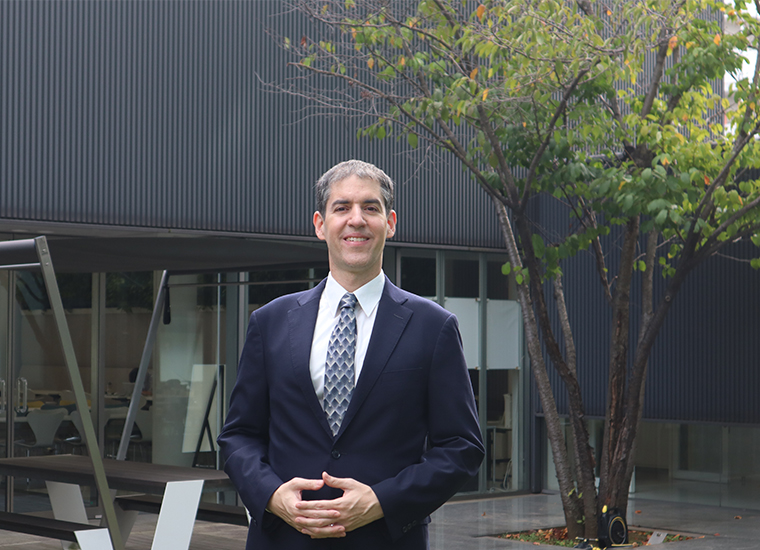
I was born and raised in the U.S. by American parents, but I have been familiar with Japanese scenery and culture through television and magazines since childhood. I majored in business administration in college, but when I decided to go to Japan as an exchange student, I began studying Japanese language and literature. This was my first time outside of North America. It was an extremely valuable experience for me to be exposed to the Japanese culture of hospitality, and the importance of taking care of things through my interactions with my Japanese host family and school friends. After returning to Japan, I developed a desire to continue to have a deep connection with Japan and to live in Japan, so I decided to enter a graduate school in Japan.

Childhood living in the U.S.
I currently handle construction projects for foreign customers. Many of the customers I work with have never done business in Japan, so they are surprised at the differences in ordering methods and project procedures from construction companies in their home countries.
Since it is common in other countries to place separate orders for design and construction with separate firms, they are often concerned about the "integrated design-build" ordering method that we propose. They have strong concerns about the fact that a construction company, rather than a design firm, will be doing the design.
In such cases, I introduce examples of projects in which we have received orders for integrated design-build projects from foreign customers and explain the advantages of this approach. By utilizing the knowledge and experience of both design and construction, not only does it lead to improved quality, but it also has the advantage of centralizing contact points and responsibilities. On top of that, we strive to gain the trust of our customers by listening closely to their needs, such as environmental considerations and safety measures, and proposing solutions to meet those needs.

Networking activities at a French exhibition
In recent years, with the advancement of DX, construction needs related to the IT industry have been increasing, and we receive strong requests from our customers to open their business as soon as possible. For such customers who place importance on speed, the integrated design-build method is effective. By placing orders for materials and preparing for construction during the design phase, we can shorten the overall construction period of the project.
It is not easy to understand the differences in customs and business practices among countries, but we place the highest priority on eliminating concerns from the customer's point of view and strive to deepen mutual understanding. That is why I am deeply moved when I receive words of appreciation and gratitude from our customers.
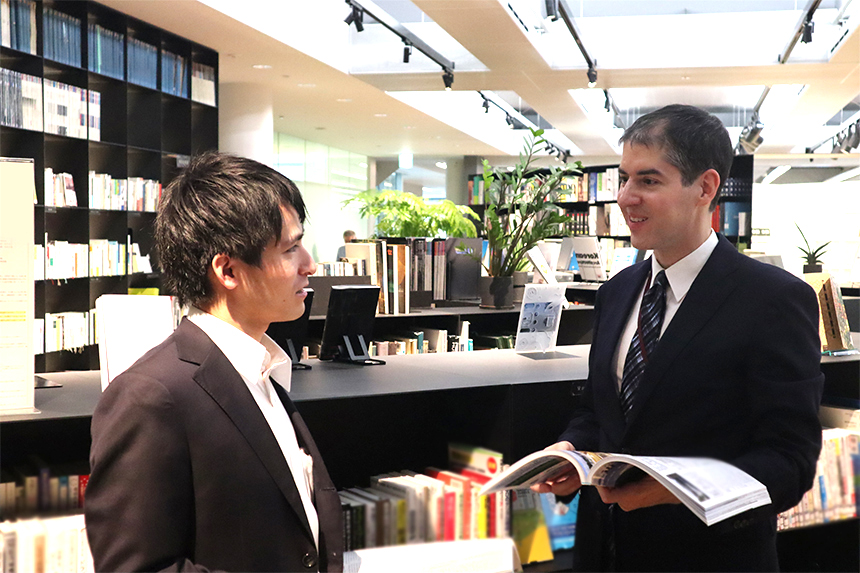
Casual meetings with a project member
I previously worked on attracting tenants to commercial facilities for which we had received orders. I conducted market research on the characteristics of the area and competing tenants, and proposed tenants that would attract customers and increase the brand value of the facility, such as "first-time-in-Japan" tenants.
One time, a customer asked me to introduce tenants for a commercial facility to be built on a large site, which would include entertainment-oriented restaurants and experiential facilities. I proposed various types of tenants such as a restaurant where visitors could experience e-sports, a restaurant where they could enjoy golf and pool, a VR facility, a trampoline park, and many other types of tenants that would be expected in the future and that would differentiate the facility from others.
In order to gain the sympathy of our customers, I provided an opportunity for them to actually get to know the tenants. By experiencing the appeal of each of the tenants, we were able to generate interest in a new form of entertainment. Then by satisfying our customers, we aim to build long-term relationships.
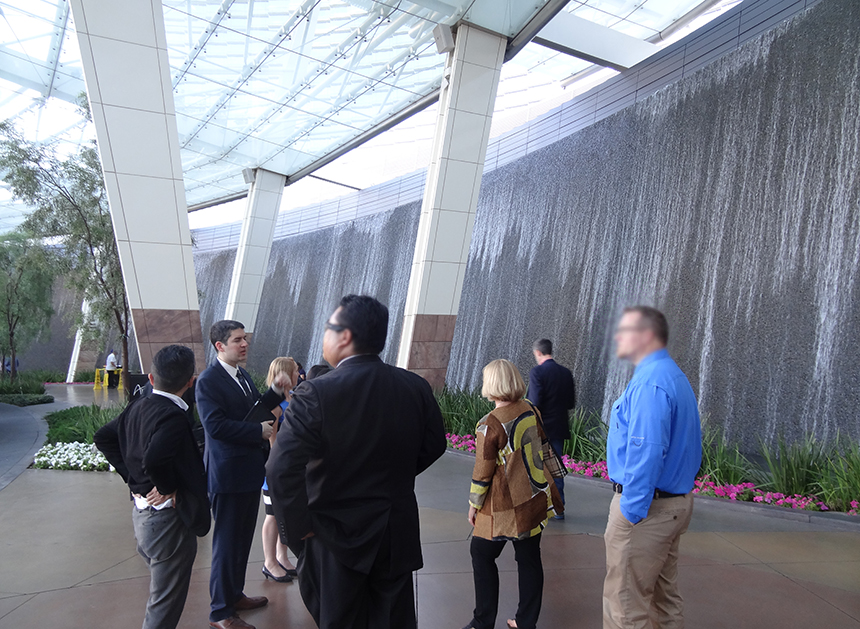
Attending guests at various facilities in the U.S.
Takenaka’s 400-year history is longer than that of my home country, the United States of America, and foreign customers are impressed, as I was myself. Our customers trust and expect us to be in business for a long time.
For our overseas customers, in addition to the differences in culture and customs between Japan and other countries, there are many new experiences, such as the solutions we provide and the contracts in Japan. At the same time, for us as well, we often experience new needs and possibilities for architecture through our relationships with global customers. I would like to take advantage of both the experience I gained growing up in the U.S. as well as my time spent in Japan, and play a role in capturing and communicating cultural concepts that are difficult to convey in words.
By listening carefully to the needs and concerns of our customers, deepening communication, and maximizing our comprehensive engineering capabilities, I hope to turn customer dreams into reality.
I would like to serve as a bridge between Japan and the rest of the world so that business can be conducted smoothly not only for customers already operating in Japan but also for those who are considering entering the Japanese market.
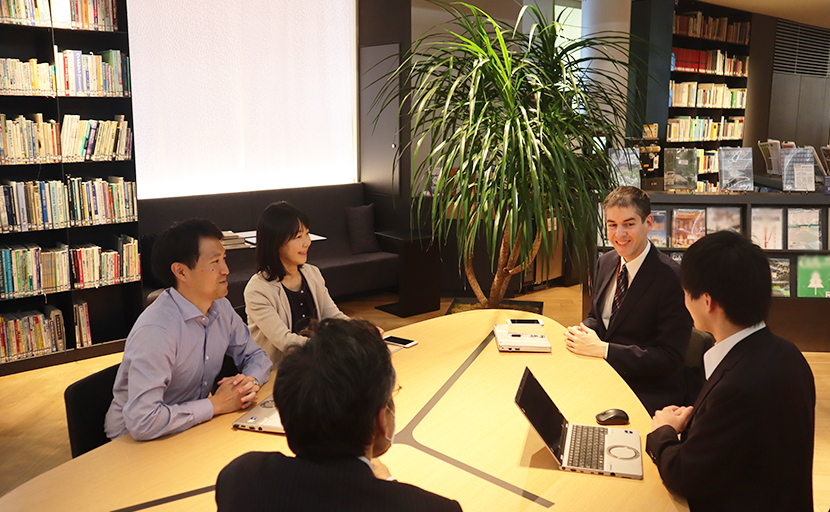
Exchanging information with development sales members and discussing future proposals
